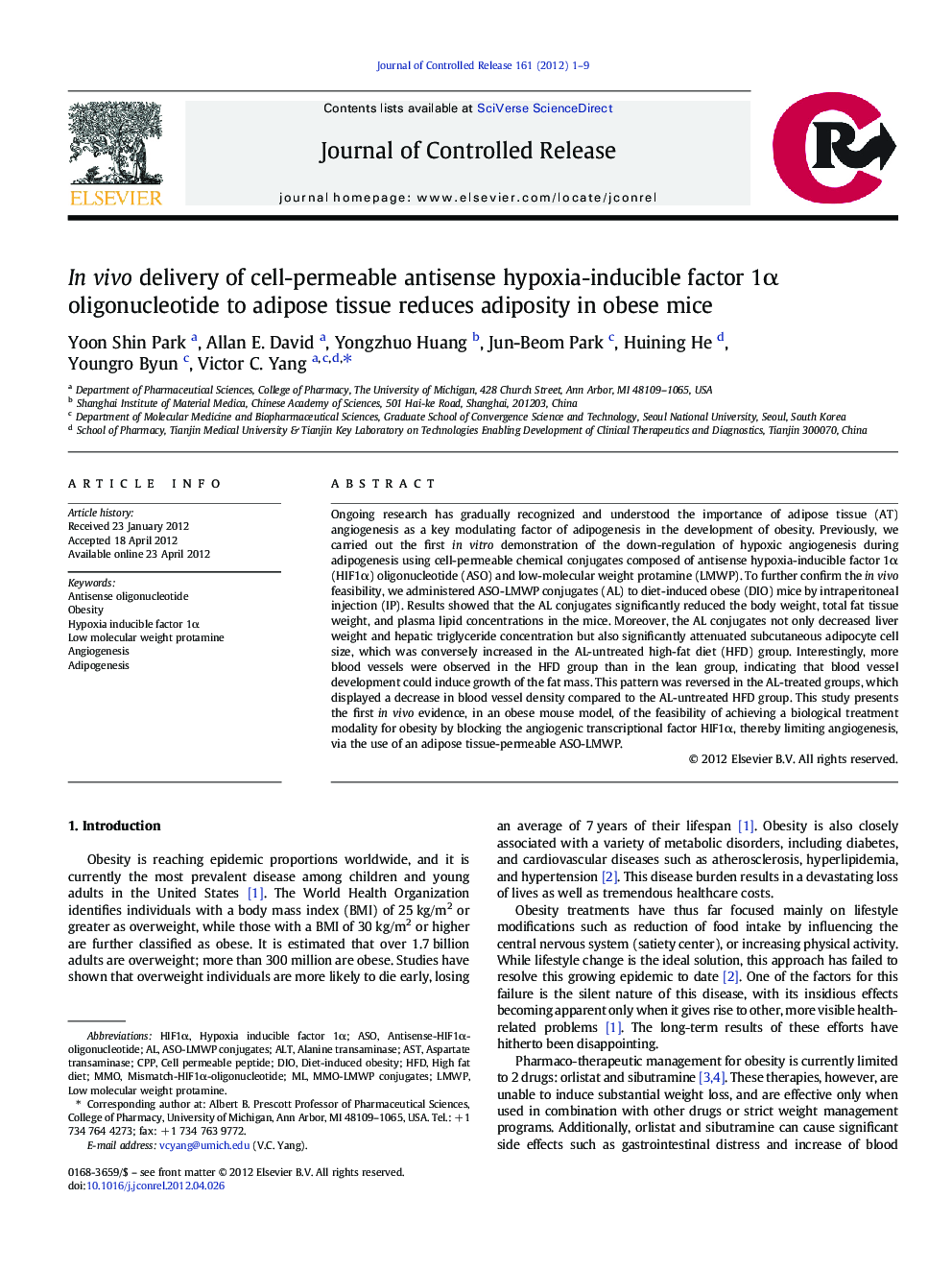| Article ID | Journal | Published Year | Pages | File Type |
|---|---|---|---|---|
| 1424553 | Journal of Controlled Release | 2012 | 9 Pages |
Ongoing research has gradually recognized and understood the importance of adipose tissue (AT) angiogenesis as a key modulating factor of adipogenesis in the development of obesity. Previously, we carried out the first in vitro demonstration of the down-regulation of hypoxic angiogenesis during adipogenesis using cell-permeable chemical conjugates composed of antisense hypoxia-inducible factor 1α (HIF1α) oligonucleotide (ASO) and low-molecular weight protamine (LMWP). To further confirm the in vivo feasibility, we administered ASO-LMWP conjugates (AL) to diet-induced obese (DIO) mice by intraperitoneal injection (IP). Results showed that the AL conjugates significantly reduced the body weight, total fat tissue weight, and plasma lipid concentrations in the mice. Moreover, the AL conjugates not only decreased liver weight and hepatic triglyceride concentration but also significantly attenuated subcutaneous adipocyte cell size, which was conversely increased in the AL-untreated high-fat diet (HFD) group. Interestingly, more blood vessels were observed in the HFD group than in the lean group, indicating that blood vessel development could induce growth of the fat mass. This pattern was reversed in the AL-treated groups, which displayed a decrease in blood vessel density compared to the AL-untreated HFD group. This study presents the first in vivo evidence, in an obese mouse model, of the feasibility of achieving a biological treatment modality for obesity by blocking the angiogenic transcriptional factor HIF1α, thereby limiting angiogenesis, via the use of an adipose tissue-permeable ASO-LMWP.
Graphical abstractFigure optionsDownload full-size imageDownload high-quality image (216 K)Download as PowerPoint slide
